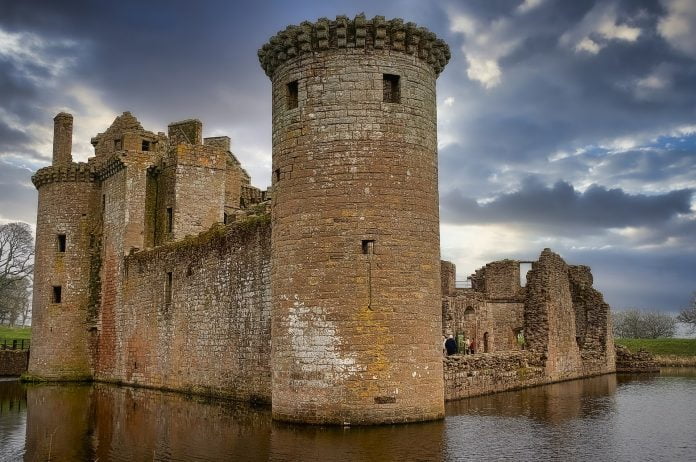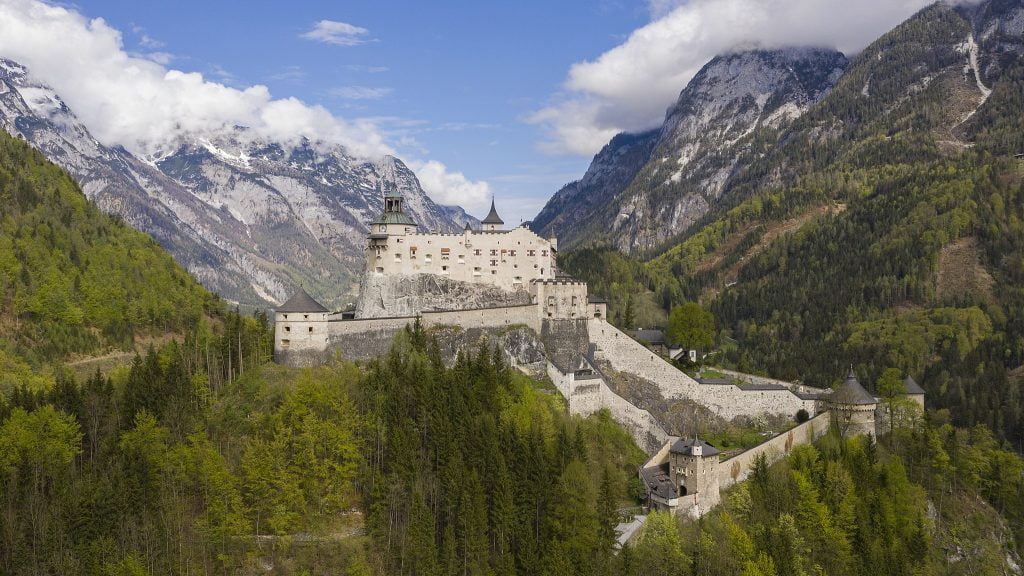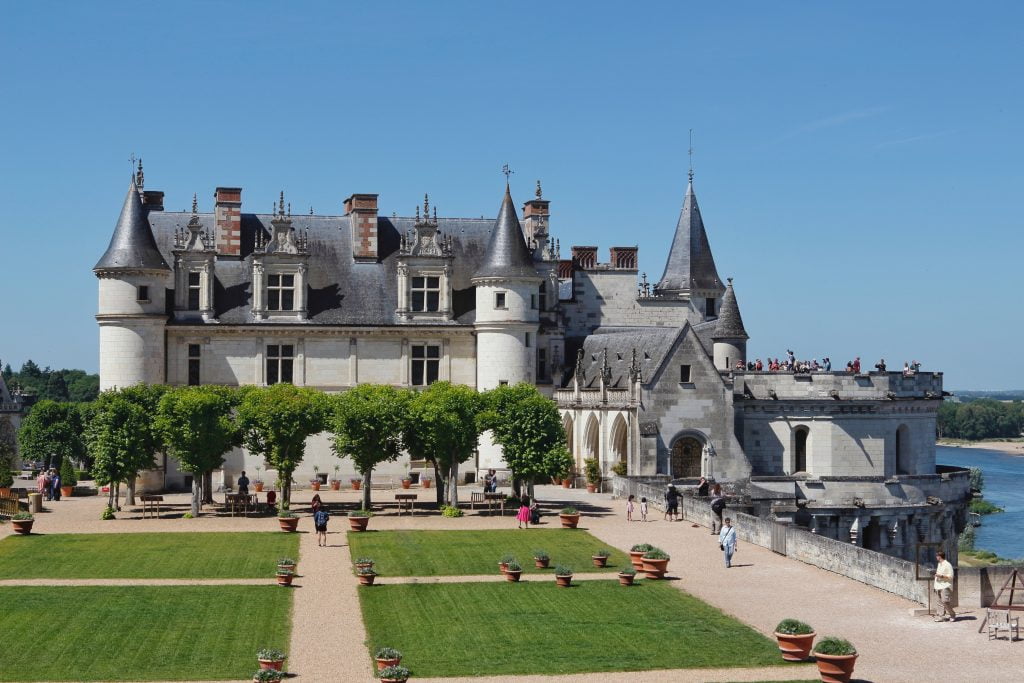Built in the 13th century on the southernmost side of Scotland, Caerlaverock Castle is a masterpiece in its own right. Constructed as a stronghold for its inhabitants, this castle boasts an amazing defense system – so much so that even its name translates to “a defensible fort” in English. It’s architectured in a unique triangular shape and has become quite one of the popular tourist destinations in Scotland. Let’s take a look at everything that you need to know about it:
Table of Contents
Caerlaverock Castle has been used as the backdrop of the rom-com, The Decoy Bride.
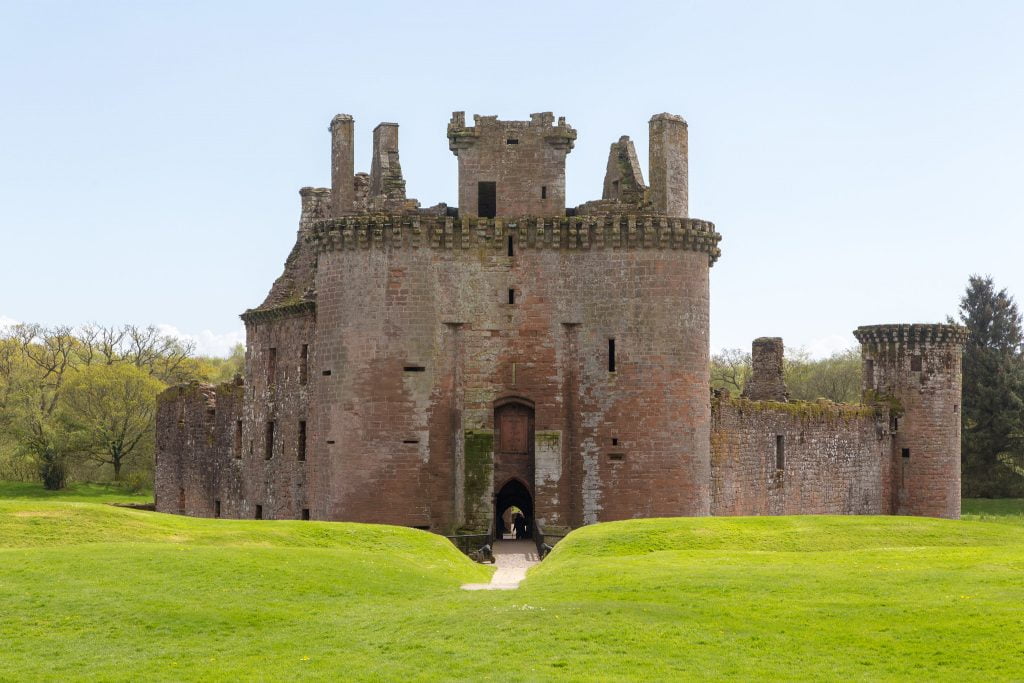
Frequently Asked Questions
Where is Caerlaverock Castle Located?
Located seven miles from the market town of Dumfries, Scotland, Caerlaverock Castle boasts a moated 13th-century construction.
When was Caerlaverock Castle Built? Who Build It?
The land on which Caerlaverock Castle stands today was originally bestowed upon Sir John Maxwell by Alexander ll in the year 1220. This was where the original structure of the castle was erected. When successorship changed, it was Sir Aymer Maxwell that laid the foundation of the triangular-shaped fortress that we know today.
When is The Best Time to Visit the Castle?
If you’re one for bird-watching, then you should definitely visit the castle in winter.
What Other Monuments are Located Nearby?
You can always visit WWT Caerlaverock (a sanctuary for migrating birds) or Sweetheart Abbey if you have enough time after visiting the castle.
FOR HISTORY | BEAUTIFUL IMAGES | INTERESTING FACTS | TRAVEL TIPS
Early History
Origins & Original Construction (1220-1270)
Caerlaverock Castle stands proud on the land that was endowed upon Sir John Maxwell on his promotion by Alexander ll. The original construction of the castle included a square-shaped building that was enclosed by a timber boundary wall.
The land ownership changed when Sir Aymer Maxwell became the successor, but he did not reside there, instead choosing to construct a brand new fortress (around 200 meters or 218 yards away) atop an outcropping on the same land. This construction exists to this day and is known as the modern-day Caerlaverock Castle. It was completed around 1270.
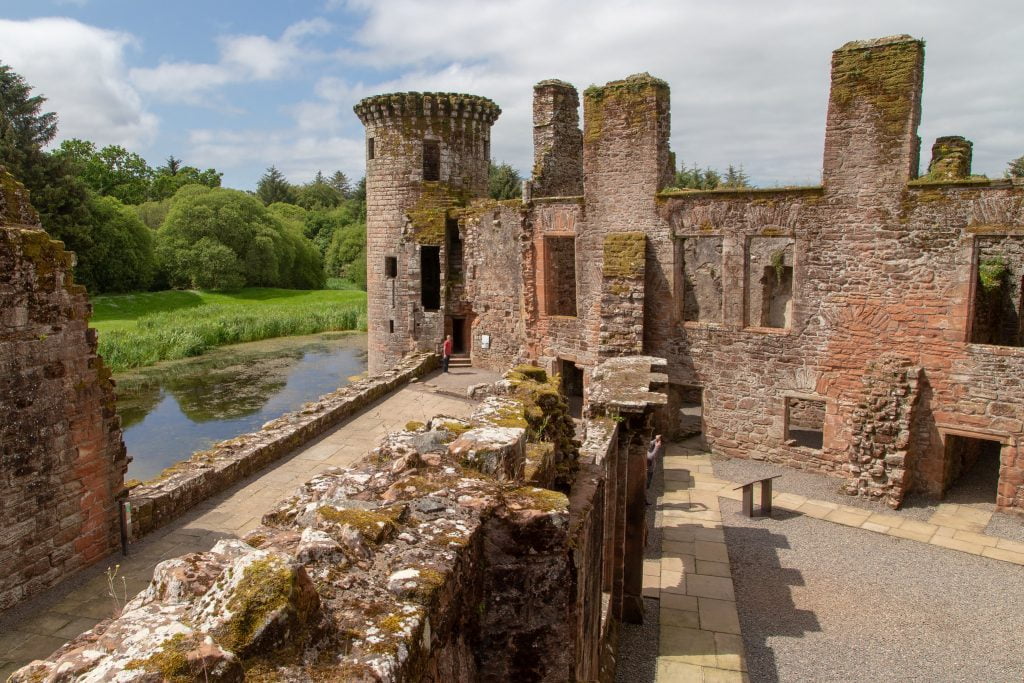
Caerlaverock Castle in the Wars of Independence
Caerlaverock Castle is situated at a very strategic location on the precipice between Scotland and England, which has led to it being involved in a number of sieges and wars. First, there was the political scuffle in 1286, which occurred because Alexander lll passed away without an heir. This further led to the War of Scottish Independence, where Caerlaverock Castle was at the very center. In fact, it was from the grounds of this very castle that the Maxwells led an attacking force.
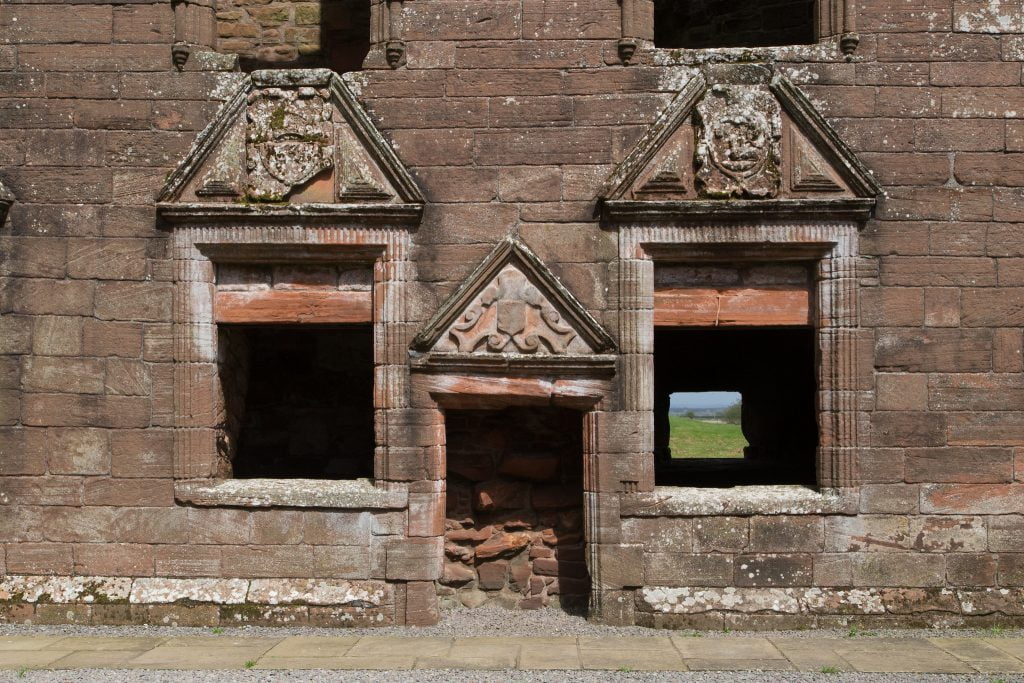
However, the very next year, in July of 1298, Edward I besieged the fortress ruthlessly and took over. This was a historically significant siege as it was Edward l’s first step to taking over Scotland after capturing Wales. His cavalry included 87 knights and 3000 men, along with multiple siege engines. His invasion was successful as the castle succumbed within two days.
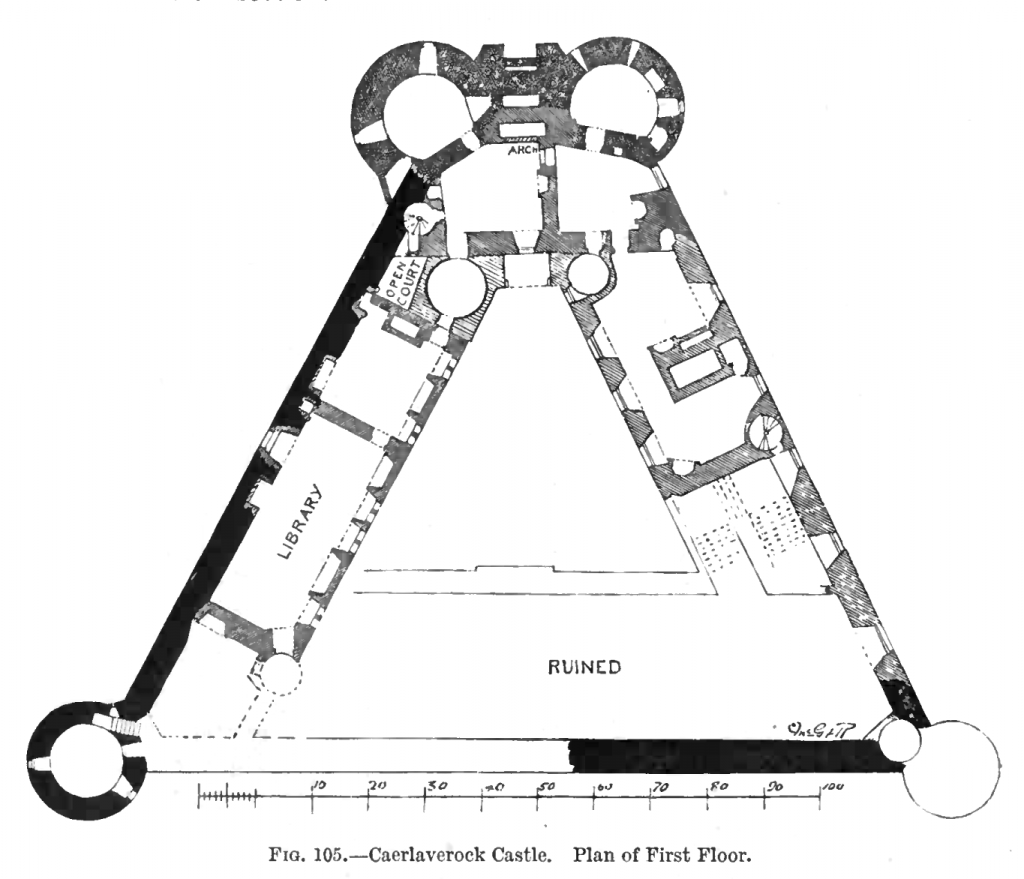
Partial Dismantling & Subsequent Repairs
Caerlaverock Castle was restored to the Maxwells again. But it was soon after, in the Battle at Bannockburn, that the castle underwent another attempted siege. The siege didn’t take, but it did inspire Eustace to incur a slight dismantling in order to stop the English from attempting to take Caerlaverock Castle.
It wasn’t until 1328 that Caerlaverock Castle was repaired again, but it was immediately ensconced in another coup by Edward Balliol. In 1355, the fortress was recaptured by Roger Kirkpatrick and given back to the Maxwells again. This is when some of the major architectural additions and repairs took place. They ended around 1450.
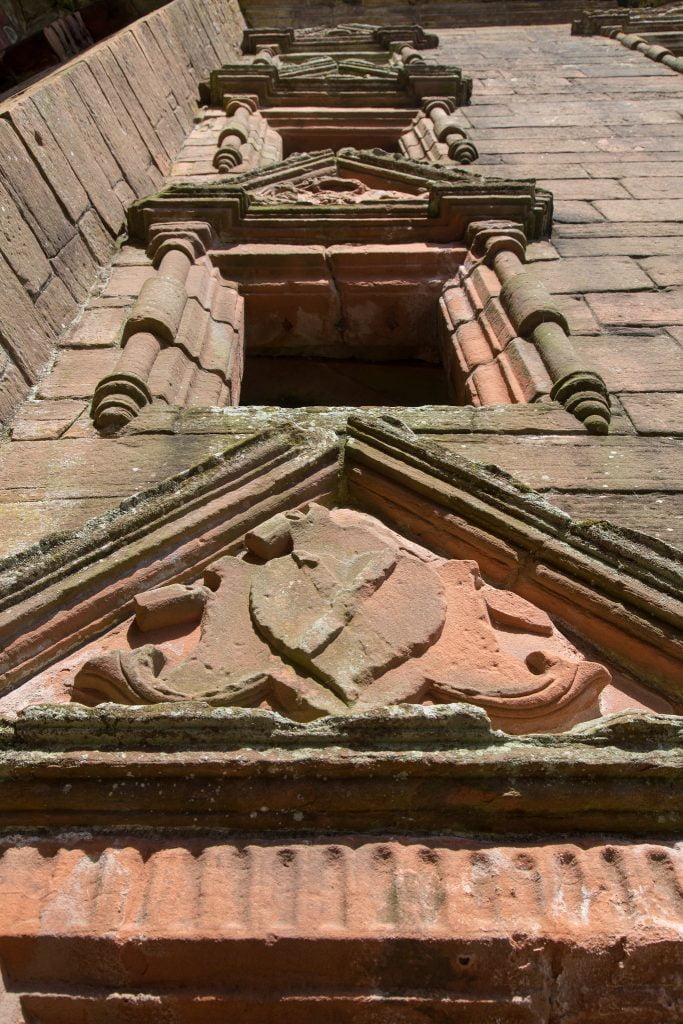
Caerlaverock Castle’s multiple sieges continued in 1570 when the Maxwells remained dogmatically Catholic during the Scottish Reformation. After the subsequent repairs in 1593, another skirmish arose that led to the castle being attacked by the Johnstones of Annandale. It was a multigenerational feud that ended with the execution of John Maxwell in 1612.
The Second Major Siege (1640)
Aside from the initial attack by Edward l, the second biggest siege listed under the history of Caerlaverock Castle came in 1640 when the Maxwells had decided to side with Charles l. The attack lasted for a whopping 13 weeks, and to ensure that it could never be used for defense again, Caerlaverock was stripped of its curtain walls to render its defenses moot.
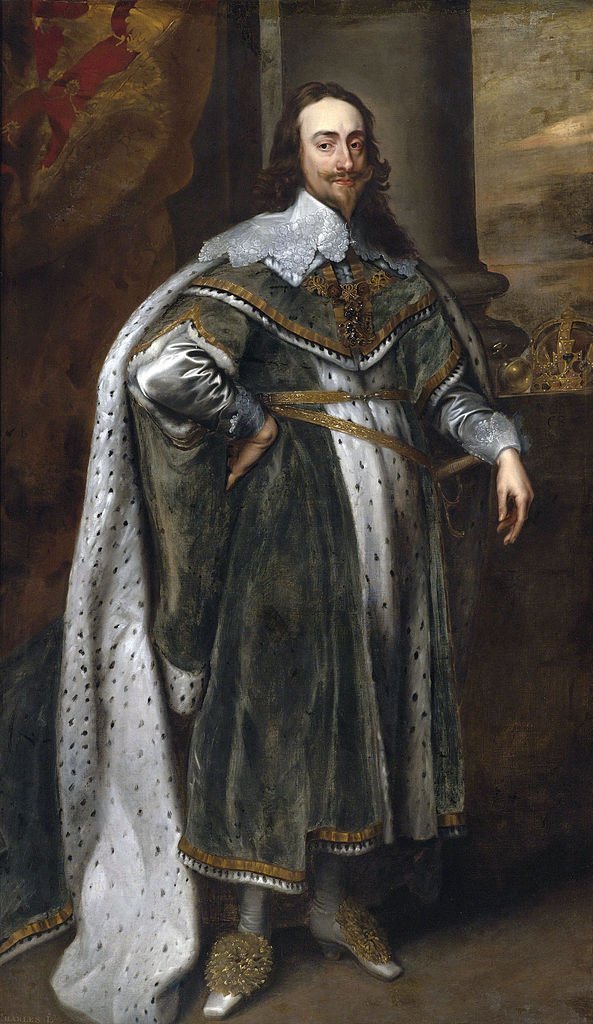
Under the Earls of Nithsdale
Maxwell the Tenth was married to Elizebeth Beaumont, soon after he was granted the title of Earl of Nithsdale by King James. He was also placed in charge of the Privy Council of Scotland, which is when he added to the architecture of Caerlaverock Castle – to make it grander as befitted his new title. Amidst some of the most popular of these additions were the ranges that he built on the east and south sides of the existing castle structure. They were completed in 1634, were highly elaborate, and were dubbed as the “Nithsdale Lodging.”
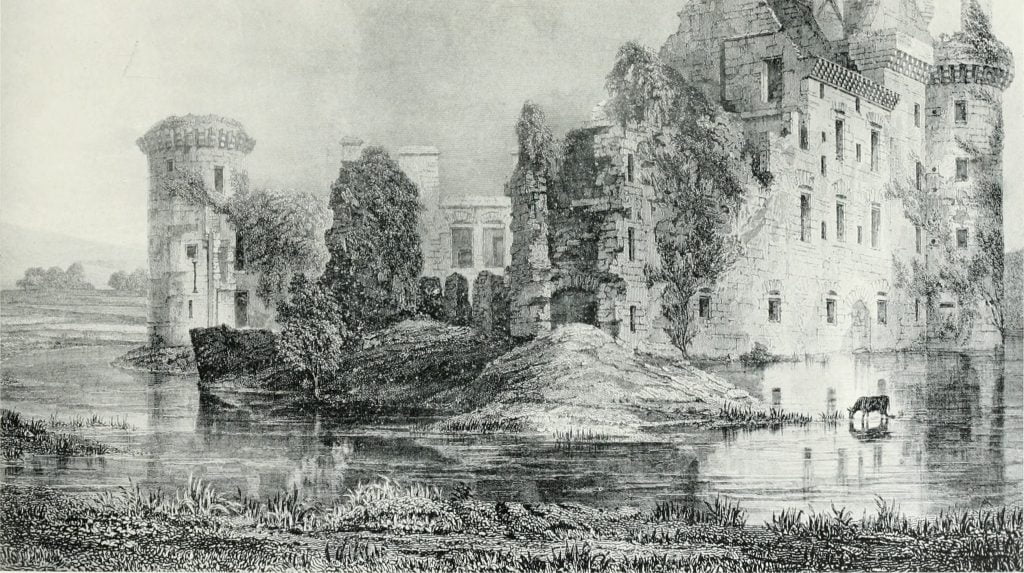
The End of an Era
Caerlaverock Castle stopped being used as a residence when the Maxwells finally moved to Terregles Castle. After that, they moved to the Traquair House, the estate was finally passed down to the Herries family through marriage. Thereafter, the ownership was given to the Dukes of Norfolk – also by marriage.
Revisit More Historic Places Below or Read Further
Current Times
Caerlaverock Castle has always been a popular tourist destination and it has been attracting people with its history and cultural significance ever since the latter half of the 18th century. This was one of the main reasons why the Duke of Norfolk let it go to the care of the State in 1946. Although the State cares for and maintains the castle for tourists, it’s actually owned by Lady Mary Mumford, who inherited it from her father, the 16th Duke of Norfolk.
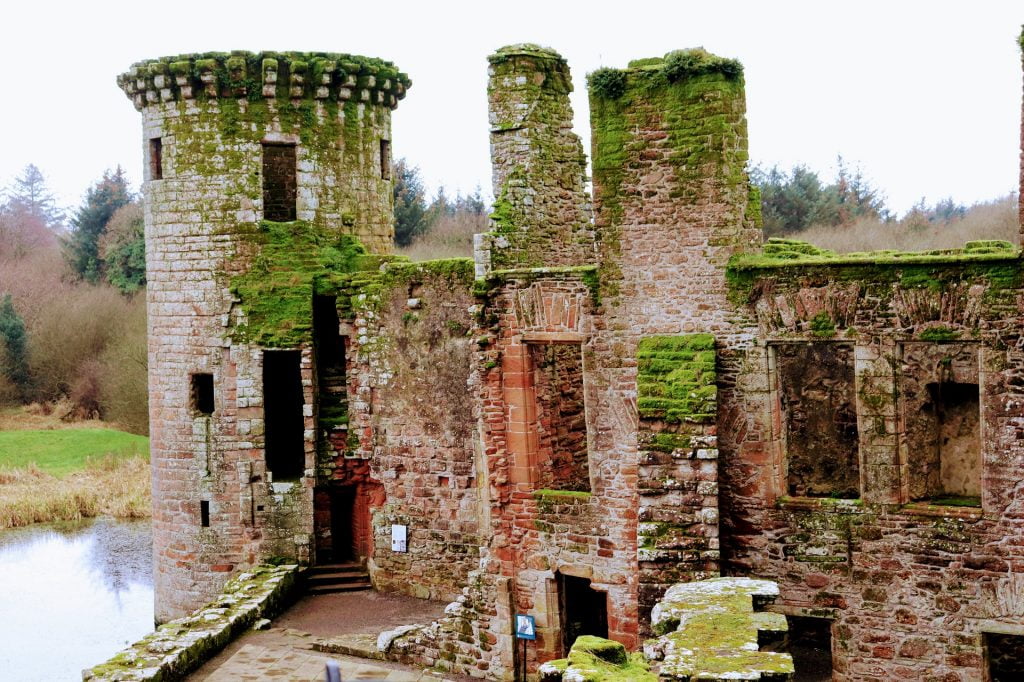
Interesting Caerlaverock Castle Facts
- Caerlaverock Castle has been used as the backdrop of the rom-com, The Decoy Bride.
- This castle has an incredibly unique triangular footprint that is surrounded by a deep moat.
- Since the location of this castle is on the border between two countries that have always had a turbulent relationship – Scotland and England – it has been a part of many sieges over the course of the centuries.
- Caerlaverock was once the site of Iron Age hill forts.
- The Mudroch Tower was given its name because it was the place where the Duke of Albany was incarcerated. It stands tall even today.
- The Nithsdale Lodging area was built in the image of classic renaissance architectural features, the most notable of which are the stunning carvings around the windows.
- The Castle is situated on 5200 acres of land, home to one of the most beautiful nature reserves in the world. It can be used for a number of activities that include cycling, bird watching, etc.
- The foundations of the previous castle are visible along the southern nature trail if you go through the woods.
Visiting Caerlaverock Castle – Tips and Tricks
The historical significance of Caerlaverock Castle makes it highly relevant in historical themes and its unique architecture makes it one of the most fun places to visit. If you too are planning a trip, then here’s some information to help you out:
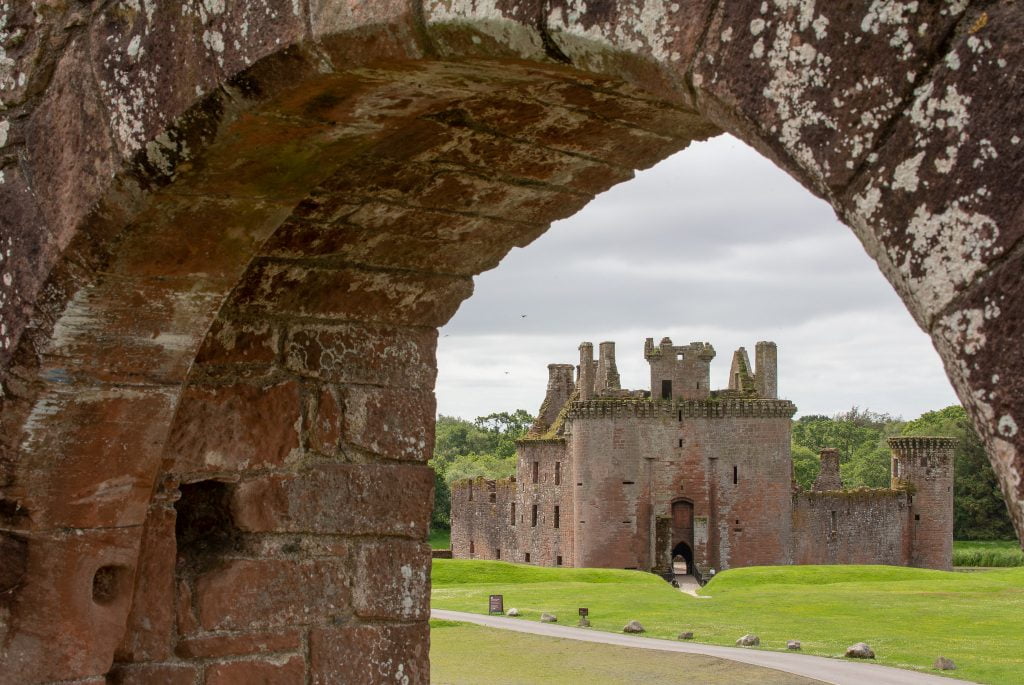
How to get to Caerlaverock Castle?
There are two ways to get to Caerlaverock Castle from Edinburgh. One of them is by train and the other by taxi. Both may take around an hour and a half and cost you somewhere between Є78-Є107 ($92-$126 USD). If you want to drive there from Edinburgh, it will take you approximately an hour and forty-five minutes at a cost of Є15-Є23 ($18-$27 USD).
Ticket Prices, Visiting Hours & Travel Tips
Information was checked & updated on October 15, 2023.
The castle visiting rules have been affected by the pandemic and most of the interior is closed to visitors for now. As for the tickets, it costs Є8 ($9 USD) per adult, Є6 ($7 USD) for senior citizens and unemployed people, and Є5 ($6 USD) for children. You can even get a family group ticket that covers an adult plus two kids for Є15 ($18 USD).
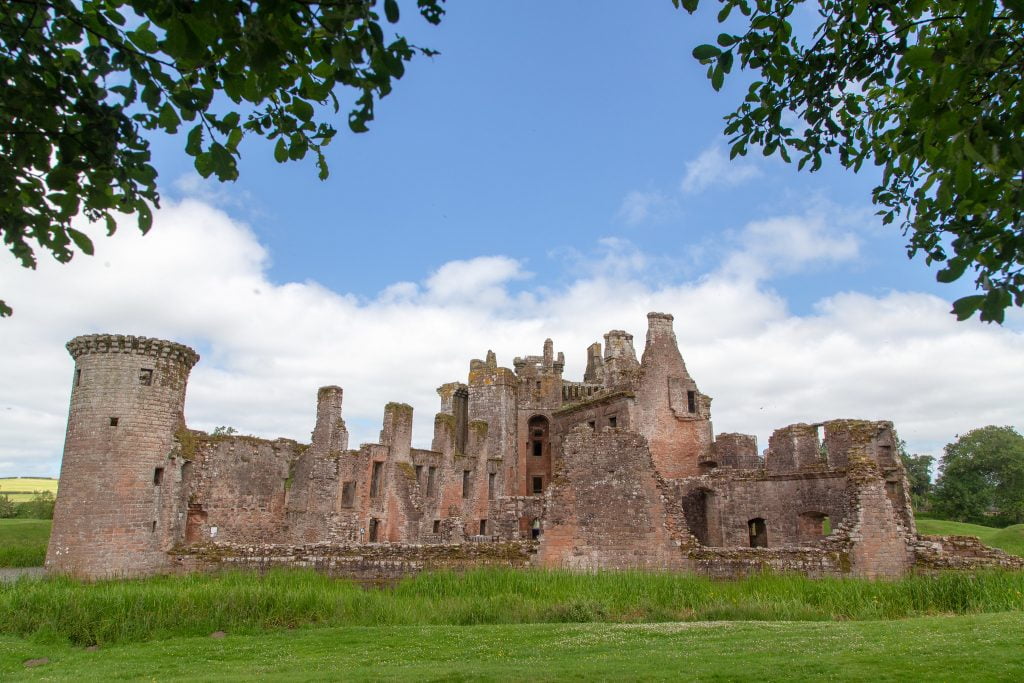
How Long Will It Take to Tour Around?
While it usually takes an hour to tour the castle, you can always stay longer to explore the grounds.
Up to Date Information
For up to date ticket prices and visiting hours visit the official website: https://www.historicenvironment.scot/visit-a-place/places/caerlaverock-castle/prices-and-opening-times/
Some words of advice and tips:
- Don’t forget to enjoy some home-baked products and the yummiest coffee at Caerlaverock Castle’s public tea room – though it’s only open consistently in summers and during weekends in winters.
- If you’re planning a nature walk, do remember to wear comfortable shoes.
- If your kids love adventure, then you should definitely take them to the model and demonstration of the old sieges. They’ll love it there, as they’re even allowed to play around with toy ransacking tools.

